
Compression socks and sleeves have been in use since the 1960s, but a lot has changed since then. Today, compression wear is in use more than ever before. Many applications have been developed for use in hospitals, sports activities and for treatment of various foot and leg issues.
What is Support Hosiery?

Support hosiery includes compression socks, sleeves and pantyhose. They are well-known for their use in treatments and for reducing symptoms of various venous disorders, fatigue, soreness and swollen legs.
A common issue faced by many of us is swelling in the feet and ankles. This swelling is due to the accumulation of blood and other fluids. Sometimes this happens after standing all day, sitting all day or while traveling.

In severe cases, the swelling can develop up to the knees or even the thighs. This swelling, or dependent edema, can cause extreme heaviness, soreness and discomfort. It can also hinder your mobility and make traveling very difficult.
Several remedies are used to reduce swelling and fight edema. These include oral medicine, the elevation of the lower body, lowering salt intake and the use of compression hosiery.
How Do Compression Hose Work?

Support hose are used in compression therapy and are popular among men and women of all ages. The basic concept of compression therapy is that the application of continuous pressure on your limbs can improve circulation and the way blood vessel valves function.
The sturdy, elastic materials used for support hose apply pressure to the legs and vessels of the legs. By choosing from a variety of pressure levels, compression wear can be used to treat a wide range of health and wellness issues.
Graduated pressure hose are a type of compression hose that work by applying maximum pressure at the ankles and minimum pressure at the knees or thighs (depending on the type of stockings you are wearing ).

This pressure gradient prevents fluids from pooling in the lower extremities. Graduated pressure patterns are especially effective at improving circulation and are also used in TED stockings.
Compression on the surface of the limbs constricts the veins and blood vessels, gently squeezing them to reduce their diameter. This increases the pressure of the fluid inside them, forcing the blood to flush towards the core of the body. The heart can then efficiently pump fresh blood towards the limbs which leads to reduced swelling.
Classification of Compression Stockings

Understanding the different options that are available will help you determine which pair of compression socks are right for you. Let’s take a look at the variety of shapes, lengths, colors, sizes and pressure levels you can choose from.
Shape Options
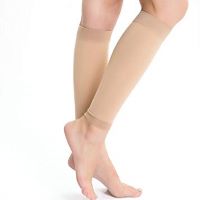
Compression stockings are available in an assortment of shapes. You will often find them in the form of closed-toe (“regular sock” style), open-toe or a sleeve (footless) sock. The most common of these are the closed-toe type. However, the style you choose will depend on your personal preference and comfort.
Open-toe compression socks cover most of your foot and ankle, ending just before the toes. This type of sock is preferred by individuals who like having their toes unrestricted. They can easily be worn with sandals and flip flops.
Colors
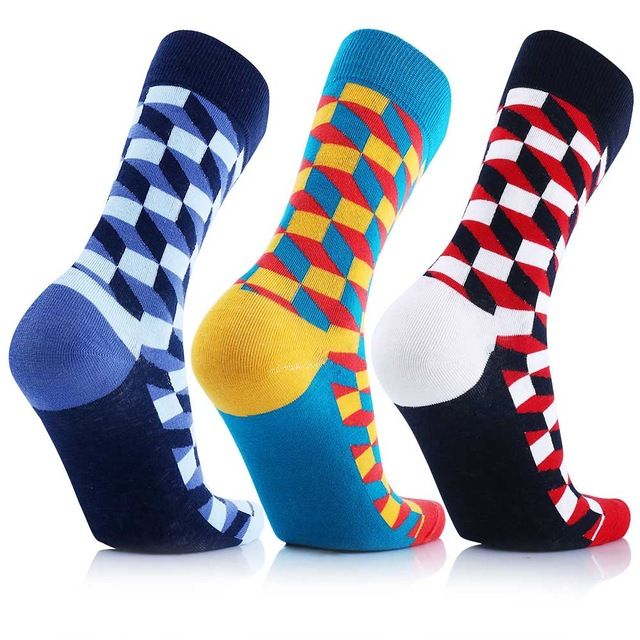
When it comes to color schemes, you’ll have a diversity of choices. Compression socks are known for flashy color options and designs. Unique patterns and colors have made pressure socks popular, especially amongst athletes.
Nurses and medical staff can show their personality by choosing funky colored socks paired with their uniforms.
The newest designs from manufacturers of support socks also include color options with work wear and casual wear in mind. Neutral shades are ideal to pair with work attire and you can’t go wrong with a classic black compression sock. Skin tone and light-colored compression hosiery is most popular with women.
Length
Another vital classification for compression stockings is length. Looking at lengths, there are ankle-high, thigh-high, knee-high and full-coverage compression wear options.
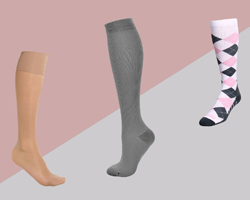
These lengths determine the coverage area of your compression socks. For instance, ankle-high socks cover the feet only and end just below the ankles; thigh-high socks offer coverage up to the mid-thigh region; knee-highs cover your shins up to the base of the knee.
Pantyhose, also known as sheer tights in the UK, are usually worn by women. Compression pantyhose can provide coverage from the feet up to the waist. An alternative menswear version is available in the form of chaps that cover the legs and have an integrated belt to hold the compression garment up.
Sizes
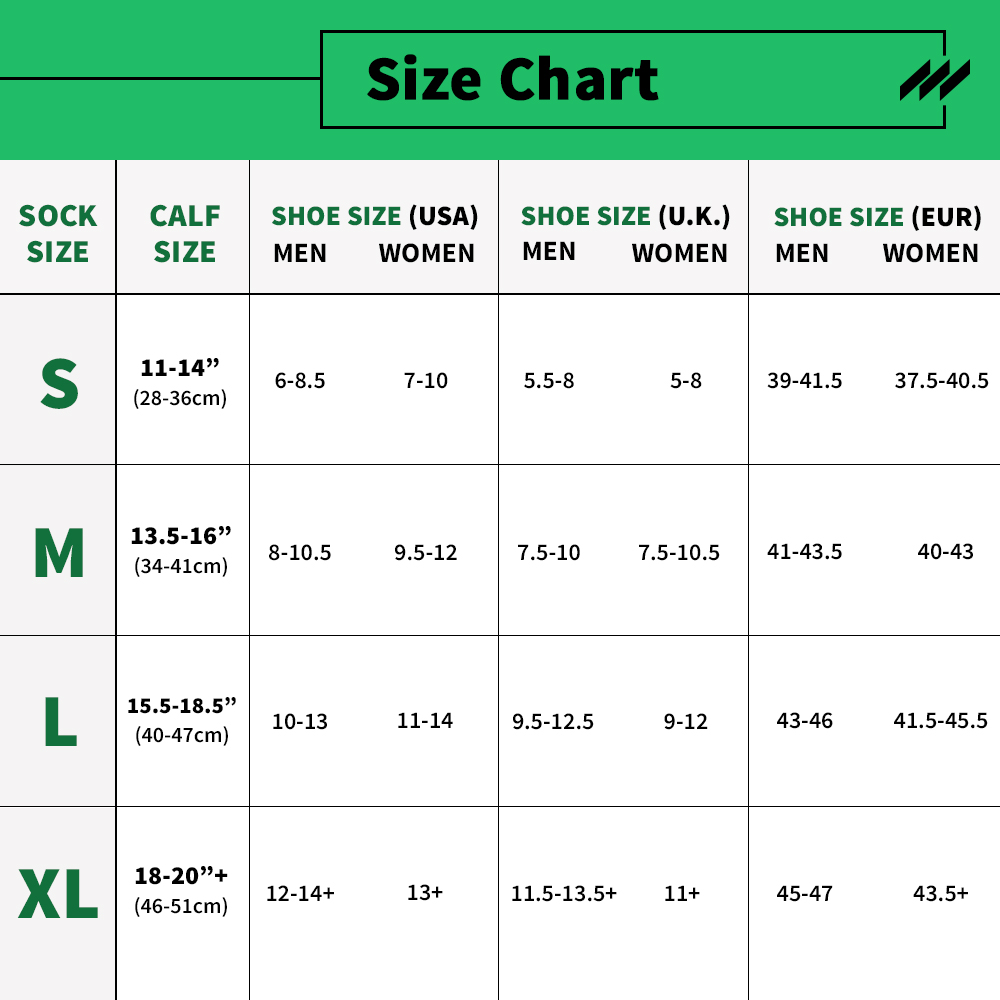
Sizes of compression garments (of all lengths and types) are usually the same as your standard shoe size. They can vary according to the measurement used by your country, like international, U.S. and Euro sizes.
To choose the correct size of compression sock, keep your foot size in mind. You will also need to record the circumference around the widest part of your calf.
Getting the correct size is very important. A size too large and your compression wear will not be able to do its job effectively. A size too small and your circulation may be decreased instead of improved.
Pressure Level
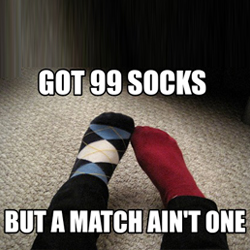
One of the most critical factors for the classification of compression socks is pressure level. The amount of pressure applied by your socks can vary from light to moderate to high, creating the following classes:
8 to 15 mmHg:
This is the lightest compression level available. These are used for managing light swelling in the feet and ankles, such as may occur during long flights.
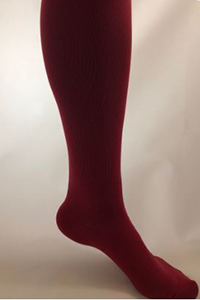
15 to 20 mmHg: Compression socks with a mild pressure fall in this range. This type of sock is ideal for mild swelling, tiredness and pain in the limbs.
20 to 30 mmHg:
This is the most common compression category. Moderate compression of 20-30 mmHg is effective for preventing DVT (deep vein thrombosis), dependent edema, swollen ankles and varicose veins. They may also be used for post-surgical recovery, diabetes, chronic venous insufficiency and superficial thrombophlebitis.
30 to 40 mmHg:
This category of compression stockings applies the highest amount of pressure on your limbs, i.e., 30-40 mmHg. It is commonly used to treat lymphedema and in recovery from severe ulcers. You must not wear a high compression level unless prescribed by your physician.
Maternity Pantyhose

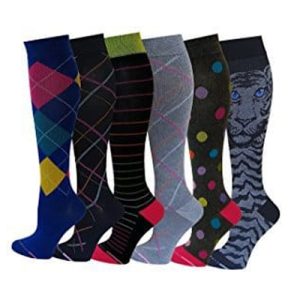
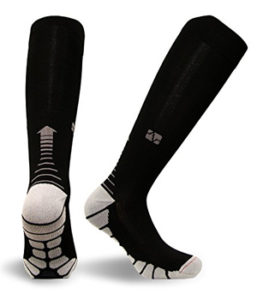
Maternity pantyhose are popular with pregnant mothers because they help to manage swelling. These types of compression hose provide additional support to allow for ease of movement and greater comfort throughout the pregnancy.
If you are an expectant mother or just stepping into parenthood, a pair of these can be beneficial for you.
Availability
Compression socks are readily available online through ComproGear or at your nearest drugstore. You do not need a doctor’s prescription to buy a pair with a pressure level of 30mmHg or less. You will need to be prepared by knowing your size and the compression level you require (according to your condition).
Online shopping makes it easy to order your favorite compression socks. You can enjoy perks such as free shipping, sales, coupons and discounts. If you do not have time in your busy schedule to go looking for compression socks in stores, then online shopping is your best bet.
However, some people prefer picking up their socks in person because it gives them a chance to feel the fabric of the sock. Sometimes there may even be a sample pair available to try on.
Remember that compression stockings are a type of therapeutic hosiery. If you are suffering from a diagnosed health condition like ulcers or diabetic peripheral neuropathy, it is best to consult your physician to discuss if compression therapy is safe for you.
Popular Articles on ComproGear
Best Compression Socks for Nurses https://comprogear.com/best-compression-socks-for-nurses/
Best Compression Socks for Ankle Swelling https://comprogear.com/best-compression-socks-for-ankle-swelling/
Compression Stockings mmHg Chart https://comprogear.com/compression-stockings-mmhg-chart/
How to Buy Compression Socks https://comprogear.com/how-to-buy-compression-socks/
Medical Uses and Benefits of Compression Hose
The use of compression therapy has been clinically proven to control, reduce and even treat several medical conditions. You can enjoy the following benefits with the regular use of compression hosiery:
Control Chronic Venous Disease

Peripheral venous insufficiency and chronic venous disorders can create considerable problems with blood circulation through the legs and feet. This disease hinders deoxygenated blood from moving back towards the heart and away from the lower limbs. Freshly oxygenated blood from the heart will have difficulty reaching the lower limbs, but compression stockings can enable healthy blood flow again.
Manage Swelling and Dependent Edema

Compression therapy is highly effective in managing dependent edema and swollen legs. Depending on the stage and condition of your swelling, compression sleeves (and socks) can keep this disease under control and promote mobility. In cases of mild or minor swelling, these socks can be useful on an as-needed basis. However, chronic edema patients must not discontinue regular use without discussing it with their doctor as discontinuation could worsen their symptoms.
Avoid Deep Vein Thrombosis

Deep vein thrombosis (DVT) is a condition in which blood accumulates in the lower extremities of the body and causes heaviness or even blood clotting. This unwanted clotting in the blood vessels can cause extreme discomfort, pain and soreness. The use of compression socks can help the wearer avoid DVT and prevent the pooling of blood in the feet.
Manage Varicose Veins
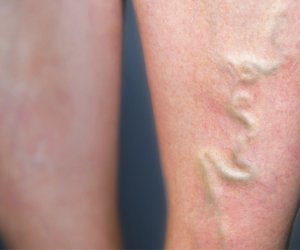
Varicose veins are common in the legs. These appear as twisted, swollen and distended veins just beneath the skin’s surface. They are usually visible from the outside of the skin and can present an unpleasant look. If they develop in a patient, they do not heal by themselves. Varicose veins are an indication of weak and damaged venous walls and valves. Compression therapy is known to reduce the inflammation caused by varicose veins and can stop their advancement as well.
Reduce Lymphedema

Lymph fluid (an important part of the body’s lymphatic system) can accumulate in the lymph vessels instead of seeping back into the blood regularly. This can cause lymphedema. Similar to edema, this condition can cause extreme heaviness and discomfort. Compression socks can negate or reverse these symptoms to an extent and give relief to the wearer.
Reduce the Risk of Phlebitis
Clotting and inflammation in the veins of the feet or legs can give rise to phlebitis. This condition can be moderate to severe, depending on the degree of clotting and weakness of the veins. Individuals suffering from varicose veins are at a greater risk of developing phlebitis and should wear compression socks regularly as a preventative measure.
During pregnancy

Pregnant mothers are often recommended compression socks by their doctors. Compression therapy can help control the volumetric increase in leg veins and can reduce symptoms of edema. Hormone changes and weight gain can also put an extra burden on the blood vessels and legs. Compression stockings can be used to provide adequate support for the lower limbs of pregnant women.
Post-Surgical Recovery Treatment
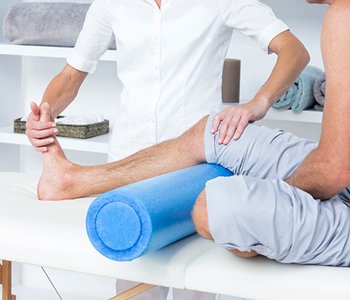
Post-surgical recovery was the compression sock’s earliest medical use and wearing them is still a popular practice. Post-surgical rehabilitation can include long durations of immobility in bed or a wheelchair. In cases when the recovery time is long and the patient cannot move around, blood circulation throughout the lower limbs becomes limited and can give rise to several health disorders of the feet and legs (including edema and blood clot formation). Doctors recommend compression hosiery for such patients.
Protection of Your Feet and Ankles
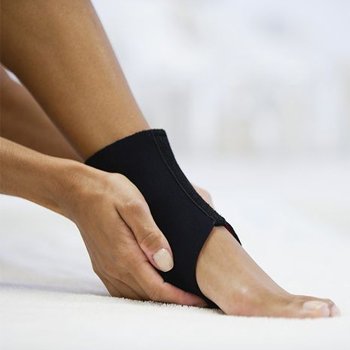
An advantage of wearing compression socks is protection from cuts, injuries and insect bites. This use of compression stockings is lesser known, but individuals who have diabetes may find it very helpful. People with diabetes require attentive foot care and protection since they may be unable to sense foot injuries. Compression socks can provide diabetics with an extra layer of protection. Hikers, bikers and runners can also use them as protection for their feet and legs during outdoor activities.
For Athletes
As discussed above, sportsmen and athletes can use compression socks to protect their feet and legs. But this is only a secondary use for compression hosiery. The main advantage of pressure socks is that they provide adequate support to the joints, muscles and tendons. Compression hose can also prevent over extension, sprains or twisted ankles.
Looking Sharp
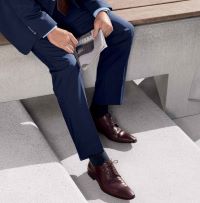
You don’t have to compromise on your sense of style just because you have a leg or foot condition to take care of. You can maintain your style and even polish it further with the right pair of compression socks.
Thinner compression socks are a great alternative to dress socks. Pressure sleeves have also become an essential accessory for runners and athletes worldwide. Choose your favorite style, design and color to stand out.
How to Choose Your Pair of Compression Socks

Now that you are aware of the variety of sizes, shapes, compressions and lengths available, you can choose which is best for yourself. If you are diagnosed with a specific medical condition, you should use the brand and specifications recommended by your doctor.
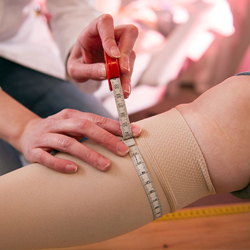
If you are buying on your own, there are a few things you need to keep in mind such as foot size, the compression range suitable for you, length, material and color.
Size
To determine your size if you are ordering socks online, you can take the exact measurement of your foot and the circumference of your calf before you proceed with your shopping. If you are buying from a store, you may be able to try out different sizes or you can request the staff to assist you with size options.
Material
Compression socks and sleeves come in a range of materials and fabric. Spandex, rubber edges, elastane fibers, cotton or nylon-polymer are common fabric options. If you sweat quite a bit, choose a compression sock made of breathable material that will wick the moisture away from your body.
Length

When choosing knee-high socks for yourself, remember this general rule: there should enough space for two finger widths above the hose and the beginning of your knee area. Thigh-high compression hosiery can fall mid-thigh or as high up as two finger widths below the pelvis.
It is not good practice to fold your socks from the top or leave any kinks or fold in them, even if they are longer or higher than you feel is necessary. Folds can cause poor circulation.
How to Wear and Take Care of Your Compression Socks
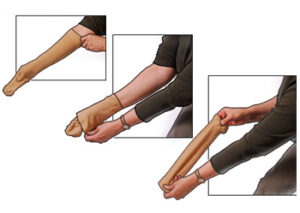
You can put your socks back on first thing in the morning, as swelling is often minimal in the mornings. This will make it easier to slip your feet into them.
It is always best to wear compression socks during the day and remove them before going to bed. They can be worn while you go about your day at work or the gym. Only wear your pressure hose to bed if advised to so so by your doctor.

Avoid using any ointments, oils or skincare products before putting on your stockings as they may damage the material. Creams can also make it more difficult to pull your socks on over your newly moisturized skin.
It is always a good idea to trim your toenails and fingernails regularly while using support hosiery, as they can nick or damage the fabric of your compression hose.

The average life span of a pair of compression socks can vary. It will depend on the type of material your socks are made of and the way you use your socks. Quality socks will last longer if you take appropriate care while washing them. Hand washing and drying at room temperature can keep your stockings in good condition.
Conclusion
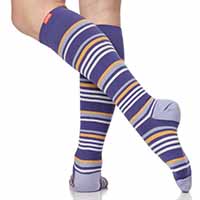
Pressure socks are an accessible remedy with so many benefits and very few side effects. Healthcare professionals agree that compression therapy is a great option for managing many health conditions. Compression stockings can be worn to improve your general well being and are a healthy addition to both active or sedentary lifestyles.
